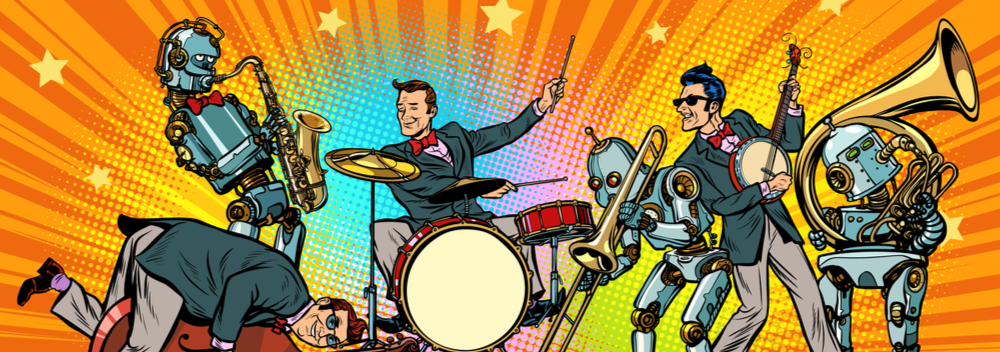AI: Is it making HR more ‘human’?
- 4 Min Read
The imposing 100-question annual survey is still the main way many of the world’s largest organisations check the pulse of their employees. Fortunately for the world’s employees, this method is rapidly running out of runway.
- Author: Jim Barnett
- Date published: Jan 15, 2019
- Categories

 These exercises capture a lot of information, but in a static manner. The data is often analysed manually and returned to organisational leaders weeks, or even months, later.
These exercises capture a lot of information, but in a static manner. The data is often analysed manually and returned to organisational leaders weeks, or even months, later.
That means team-level information is slow to make it to managers — if it does at all —diminishing the chance to take targeted action to improve, as well as stalling engagement-oriented conversations before they have the chance to occur. The process is so cumbersome that many companies only attempt to measure engagement once every one to two years.
The bigger problem, however, is that this tool often takes a broad, unpersonalised view — it misses the valuable insights about employees’ experiences which are qualitative, not quantitative. Often, those insights are provided as emotion and sentiment captured in the text boxes of an unstructured form, and using traditional survey platforms to to glean this context (and subtext) is an impossible task.
The good news is advances in HR technology can make the process of gathering and understanding employee feedback less of a chore for HR teams. These advances have also opened up the prospect of real-time analysis that could deliver team-level scores and trends directly to managers as data comes in, prompting effective action and spurring timely conversations.
From loose feedback to meaningful insights
The critical development involved here is artificial intelligence (AI) in the form of smart insights that surface key areas where managers should take action and smart sentiment analysis (via natural language processing and Machine Learning) that can quickly surface useful patterns out of even the most unstructured comments. Such software is capable of extracting meaning from open-ended feedback, identifying patterns and sentiment in order to put aggregated employee thoughts and feelings into context. In effect, AI connects the dots between what your employees say, how they feel about things, and how it relates to engagement.
‘Surfacing’ such insights, workplace themes, topics, and trends in concrete detail out of feedback, ratings, and unstructured comments means the time spent manually attempting to capture the value of these comments is reduced to mere moments. The results can quickly bust organisational myths, validate hunches, and push managers down the path to creating more inclusive, effective team environments.
From rear-view mirror to predictive analysis
As leaders and managers start to receive personalised insights that allow them to respond more effectively to employee concerns, they can also preempt difficult situations before any negative sentiment begins to stir. AI can help pinpoint major problems on the horizon by analysing historic trends and connections that would typically be hidden without a deep-dive intervention. This analysis can power predictions about turnover, performance, quality, safety, and more, all based on the incoming stream of employee feedback. And as AI systems learn over time, they end up making ever-more accurate predictions.
Improving workplace cultures with AI
And while powered by algorithms, ultimately this is software that creates a more people-centric and ultimately more human, positive and productive workplace. For example, a major US manufacturing client was able to quickly recognise that there was an issue around faulty (and hidden) decision-making, which was then quickly resolved. In another instance, a tech company realised its parental leave policies weren’t meeting the expectations of employees and were putting off potential hires. Based on the insights they received with AI-powered sentiment analysis, they were able to make constructive changes to the policy that not only made it a more competitive employer, but also showcased to employees that its leadership genuinely cared about their families and their wellbeing.
Another valuable success story: Sky is helping to better connect its 26,000 employees with management. Its Sales Centre Manager Kim Mirza has gone on record to state that, “[Using a traditional annual survey] it was quite inconsistent as to how we would monitor employee engagement and pinpoint what [staff’s] main concerns were.” That’s all changed — with results coming back from the survey (which is 50% shorter than previous approaches) to managers the same day. In the words of one of Kim’s colleagues, “The data that’s provided from our people survey is absolutely invaluable; it’s the only empirical evidence we have of our return on investment.”
These are just a few of the many stories we hear from our customers on a daily basis. The clear takeaway is that detailed, accurate analysis that can identify targeted actions to improve employee satisfaction will help boost the overall organisational ‘story’.
With such AI-derived insights, HR can become the fully ‘human’ Human Resources department it has always wanted to be. Isn’t that a goal worth striving for?









